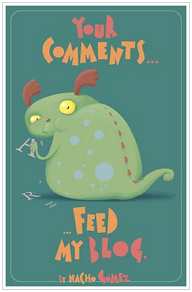"Practice makes perfect" and with this phrase in mind I started to search for resources that can help my students in this period of exams.
I wish you have the time to look through these pages, they are very useful. Practice grammar, reading, listening, writing and other skills.
Grammar:
http://www.englisch-hilfen.de/en/index.htm
http://www.onestopenglish.com/
Readings:
http://www.longlongtimeago.com/index.html
http://www.saberingles.com.ar/stories/index.html
Listening:
http://www.esl-lab.com/
http://www.saberingles.com.ar/listening/index.html
Writing:
http://www.examenglish.com/PET/PET_writing_part1.htm
http://www.saberingles.com.ar/writing/index.html
Videos:
http://www.saberingles.com.ar/movies/index.html
Various skills:
http://www.eslgold.com/
http://www.miguelmllop.com/index.php
I have realized that some of my students are having a few difficulties creating comparative and superlative sentences. I found a very nice resource about it so I put it to your disposal.
Learn and get entertained!
English - Comparative And Superlative Adjectives
|
Format: 4 parts
Usually, candidates are tested in pairs. Where there is an uneven number of candidates, the final Speaking test is a group of three rather than a pair. The group of three is not an option for all candidates, but only used for the last interview, where necessary.
There will always be two examiners. One examiner acts as both assessor and interlocutor and manages the interaction by asking questions and setting up the tasks. The other acts as assessor and doesn't join in the conversation.
Timing: 10-12 minutes. The group of three test takes 13-15 minutes.
Marks: 25 marks available which represents 25% of the total score for the whole exam.
Part
Task Type and Format
Task Focus
Timing
1. Each candidate interacts with the interlocutor.
The interlocutor asks the candidates questions in turn, using standardised questions.
Giving information of a factual, personal kind. The candidates respond to questions about present circumstances, past experiences and future plans. 2-3 minutes
2. Simulated situation. Candidates interact with each other.
Visual stimulus is given to the candidates to aid the discussion task. The interlocutor sets up the activity using a standardised rubric.
Using functional language to make and respond to suggestions, discuss alternatives, make recommendations and negotiate agreement. 2-3 minutes
3. Extended turn.
A colour photograph is given to each candidate in turn and they are asked to talk about it for up to a minute. Both photographs relate to the same topic.
Describing photographs and managing discourse, using appropriate vocabulary, in a longer turn. 3 minutes
4. General conversation. Candidates interact with each other.
The topic of the conversation develops the theme established in Part 3.
The interlocutor sets up the activity using a standardised rubric.
The candidates talk together about their opinions, likes/dislikes, preferences, experiences, habits etc. 3 minutes
|
Yesterday we had a memorable FESTIDANZA at school, all students of Saint George College performed traditional dances of Peru. They were dressed and ready to show us how well they trained these past days.
We also had a BINGO and many lucky ones got a prize!
Middle Sixth grades B performed their dance of TULUMAYOS and they won, CONGRATULATIONS! You did it very well!
|










